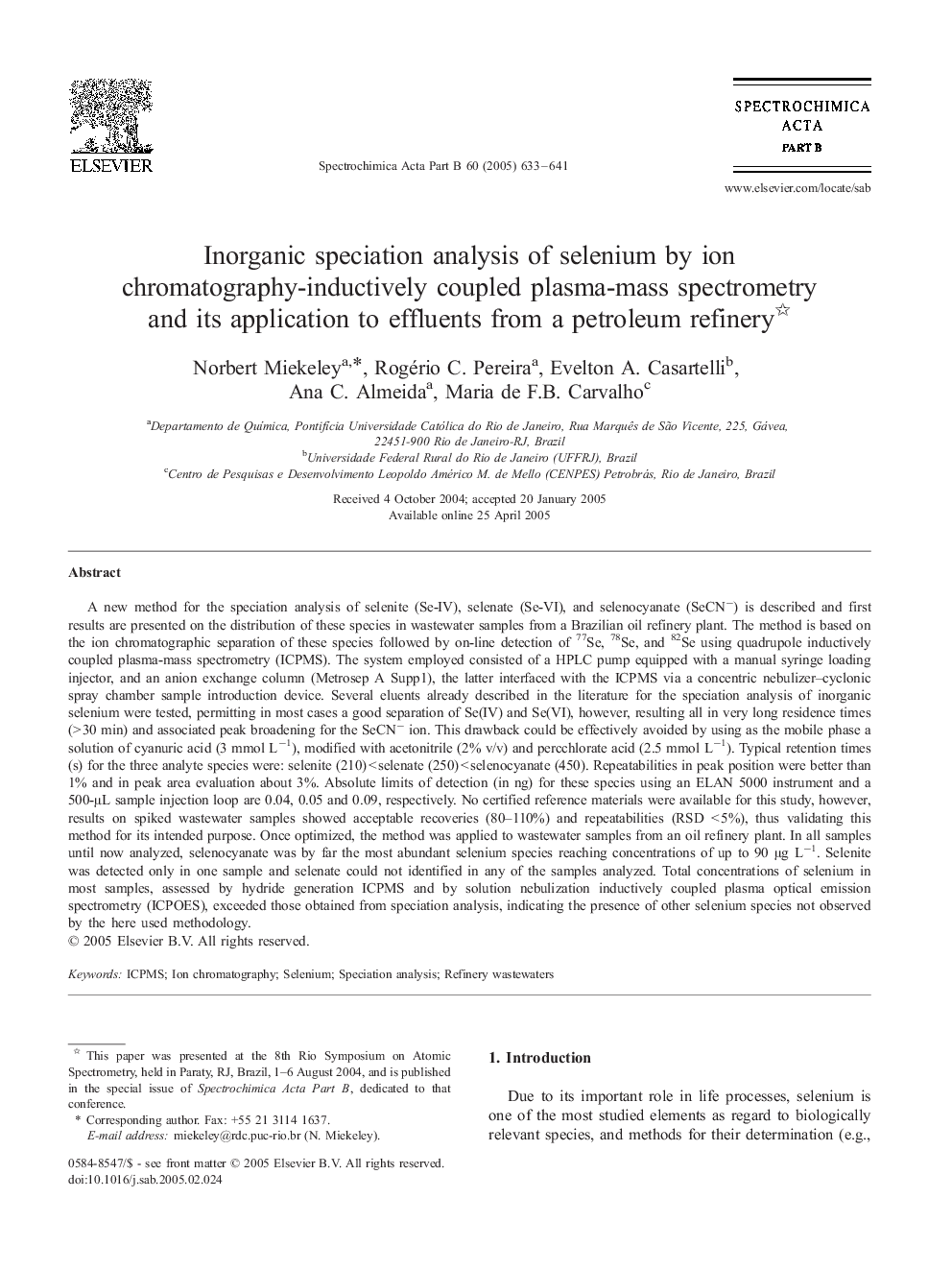| Article ID | Journal | Published Year | Pages | File Type |
|---|---|---|---|---|
| 10559097 | Spectrochimica Acta Part B: Atomic Spectroscopy | 2005 | 9 Pages |
Abstract
A new method for the speciation analysis of selenite (Se-IV), selenate (Se-VI), and selenocyanate (SeCNâ) is described and first results are presented on the distribution of these species in wastewater samples from a Brazilian oil refinery plant. The method is based on the ion chromatographic separation of these species followed by on-line detection of 77Se, 78Se, and 82Se using quadrupole inductively coupled plasma-mass spectrometry (ICPMS). The system employed consisted of a HPLC pump equipped with a manual syringe loading injector, and an anion exchange column (Metrosep A Supp1), the latter interfaced with the ICPMS via a concentric nebulizer-cyclonic spray chamber sample introduction device. Several eluents already described in the literature for the speciation analysis of inorganic selenium were tested, permitting in most cases a good separation of Se(IV) and Se(VI), however, resulting all in very long residence times (> 30 min) and associated peak broadening for the SeCNâ ion. This drawback could be effectively avoided by using as the mobile phase a solution of cyanuric acid (3 mmol Lâ1), modified with acetonitrile (2% v/v) and percchlorate acid (2.5 mmol Lâ1). Typical retention times (s) for the three analyte species were: selenite (210) < selenate (250) < selenocyanate (450). Repeatabilities in peak position were better than 1% and in peak area evaluation about 3%. Absolute limits of detection (in ng) for these species using an ELAN 5000 instrument and a 500-μL sample injection loop are 0.04, 0.05 and 0.09, respectively. No certified reference materials were available for this study, however, results on spiked wastewater samples showed acceptable recoveries (80-110%) and repeatabilities (RSD < 5%), thus validating this method for its intended purpose. Once optimized, the method was applied to wastewater samples from an oil refinery plant. In all samples until now analyzed, selenocyanate was by far the most abundant selenium species reaching concentrations of up to 90 μg Lâ1. Selenite was detected only in one sample and selenate could not identified in any of the samples analyzed. Total concentrations of selenium in most samples, assessed by hydride generation ICPMS and by solution nebulization inductively coupled plasma optical emission spectrometry (ICPOES), exceeded those obtained from speciation analysis, indicating the presence of other selenium species not observed by the here used methodology.
Related Topics
Physical Sciences and Engineering
Chemistry
Analytical Chemistry
Authors
Norbert Miekeley, Rogério C. Pereira, Evelton A. Casartelli, Ana C. Almeida, Maria de F.B. Carvalho,
